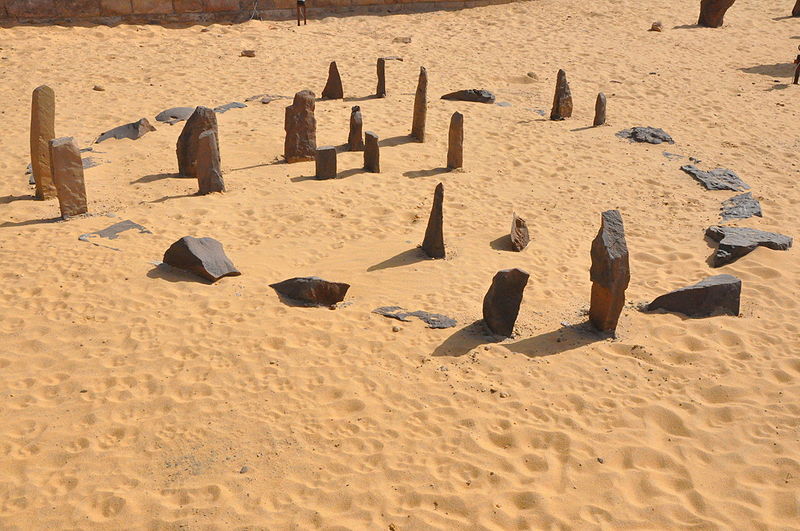Nabta Playa sun and star observatory in astrogeography. Astrology & Magical Places: on the astrogeographical positions of the sun and star observatory at Nabta Playa west of Abu Simbel, Egypt
Introduction: Ancient Observatories – by Stanford Solar Center
African Cultural Astronomy: Current Archaeoastronomy and Ethnoastronomy by editors Holbrooke, Medupe, Urama
Compare: Der Sonnentempel von Goseck aus astrogeographischer Sicht, Gemini and Sagittarius – The Stonehenge Monolithic Circle, The Bighorn Medicine Wheel in Capricorn and Aries, Astrology and Sacred Sites: Boscawen-Un Stone Circle,
Nabta Playa is a large internally drained basin in the Nubian Desert of southern Egypt about 100 kilometers west of the famous temple of Abu Simbel. The Nabta Playa observatory dates from the 6th millenium BC or older. It was discovered in 1974.

Nabta Playa sun and star observatory has a maximum length of 1600 m (N-S) and width of 800 m (E-W). Apart from the function of the installation as a sun or star temple and a gathering site for sacrifical or other rites it is assumed that the installation was served as a calendar building. This means that it was used to determine the position of the sun to decide the best dates for the change of the tribes winter and summer quarters.
Astrogeographic position for morphogenetic field level 3 which describes the atmosphere, energetical situation and topics of the site itself: the coordinate of the astrogeographical longitude at the center of the installation lies exactly on the cardinal divide of 0°Libra – the degree of the autumn equinox. This means it falls in between earth sign Virgo sign of reason, health, gardening, harvest, storing food, science of agriculture, conservation of knowledge, health, strategical planning and spiritual entities of plants in the west and air sign Libra the sign of sensual perception, gates, openness, harmony, balance, equilibrium. justice, the scales as a tool for measurement and angels. The topics of Libra as the sign of relationship and marriage and of dancing could also indicate the function of the site as a place for gatherings, festivals, marriage fairs and justice. Another important example for an astrogeographical position of a stone circle between Virgo and Libra is the Ring of Brodgar. In agricultural societies the autumn equinox could also relate to a thanksgiving and harvest celebration or autumnal fertility rites.
The position right on a cardinal divide is an important hint at a profound geomantical knowledge and experience of the creators of the archeastronomical installation. This choice of the exact position of the site has of course no direct influence on the observed sun, moon and star positions. But in astrogeographical field study the energetical topics of a chosen site give us a hint about the functional, psychological and energetical topics that played the major role in the decision where the observatory should be installed.
The choice of the divide of the atumn equinox and not the winter or summer solstice as in agricultural societies supports the assumption that the determination of the date was important for the change of the winter quarters.
The coordinate for the astrogeographical latitude stretches through the two spiritual, extraterrestrian signs Aquarius and Pisces. Creative, innovative air sign Auqarius the sign of the sky heaven, paradise, self-finding, abstraction, flying, stars, inspiration and self-liberation and highly imaginative water sign Pisces the sign of the spiritual plane, dream world, legends, fairy-tales, mystification, the invisible, the subtle plane, empty space, music and the most important astrogeographical indicator for temple sites as places of reconnection with the spiritual plane.